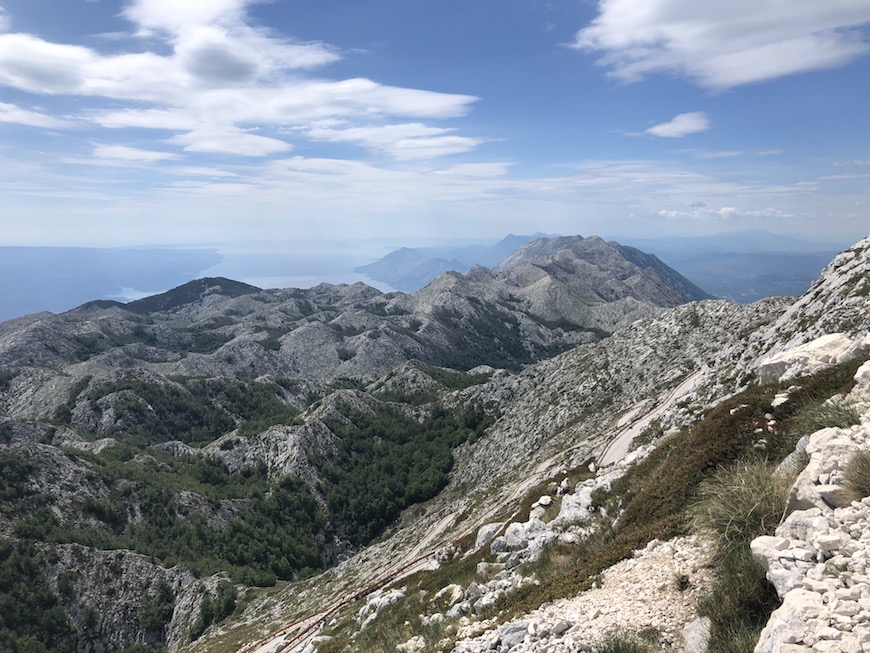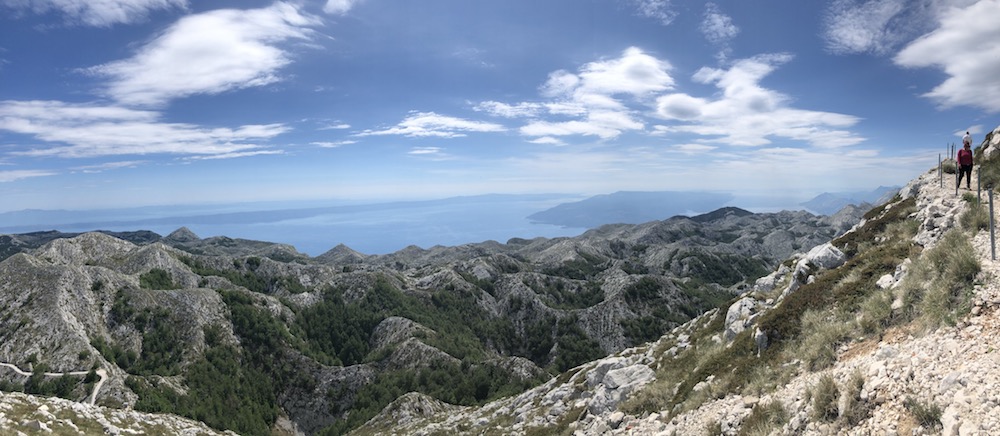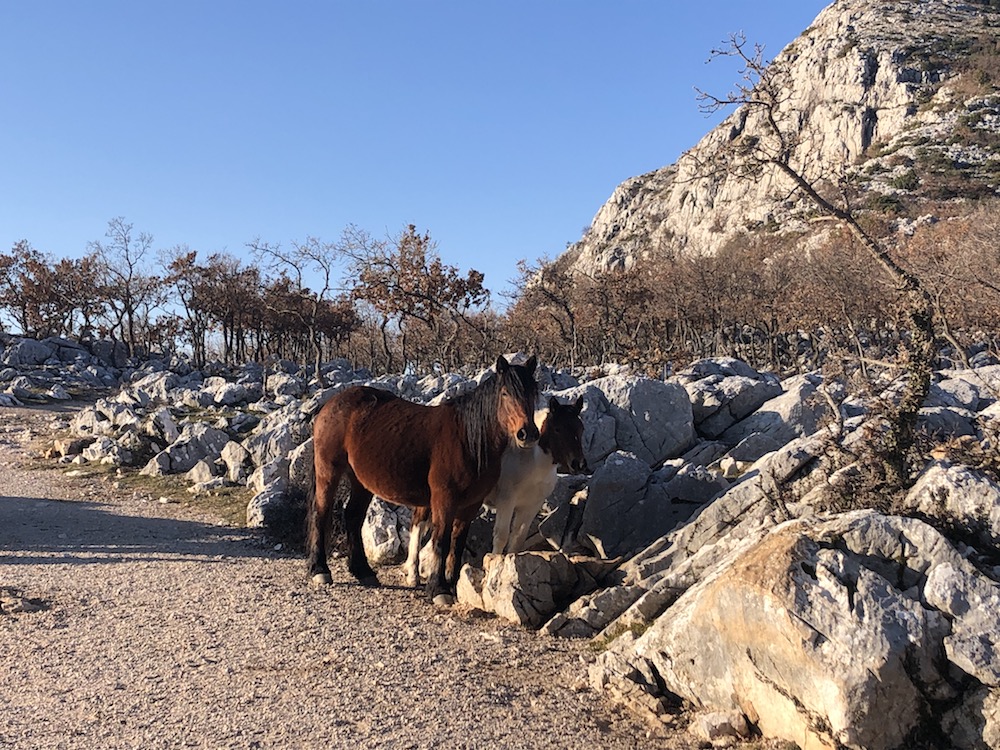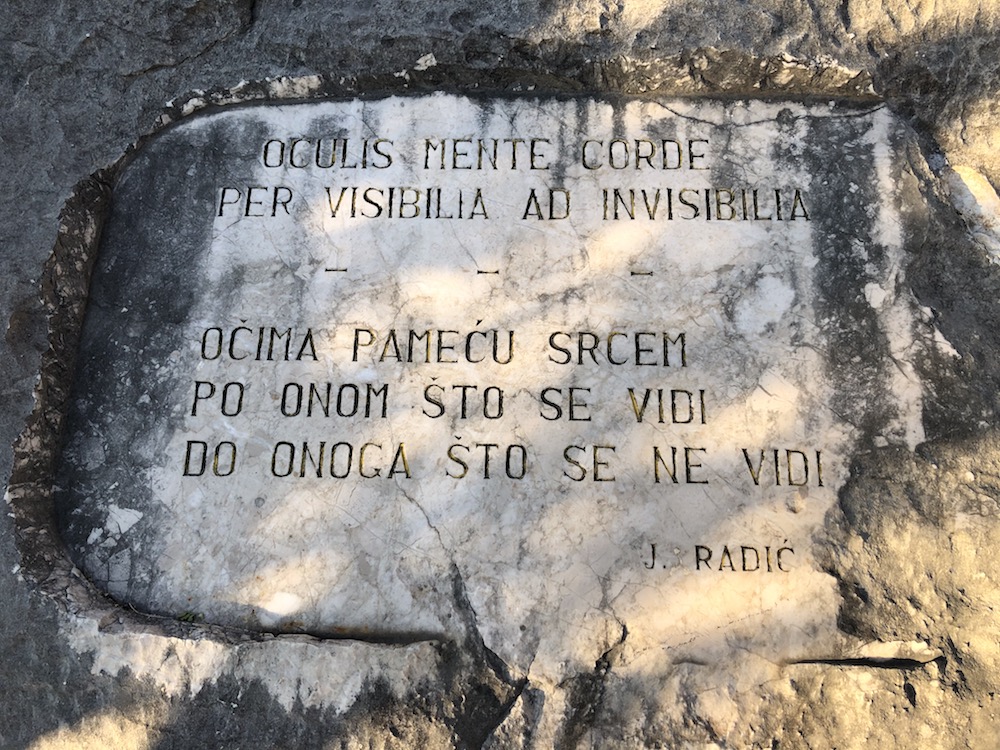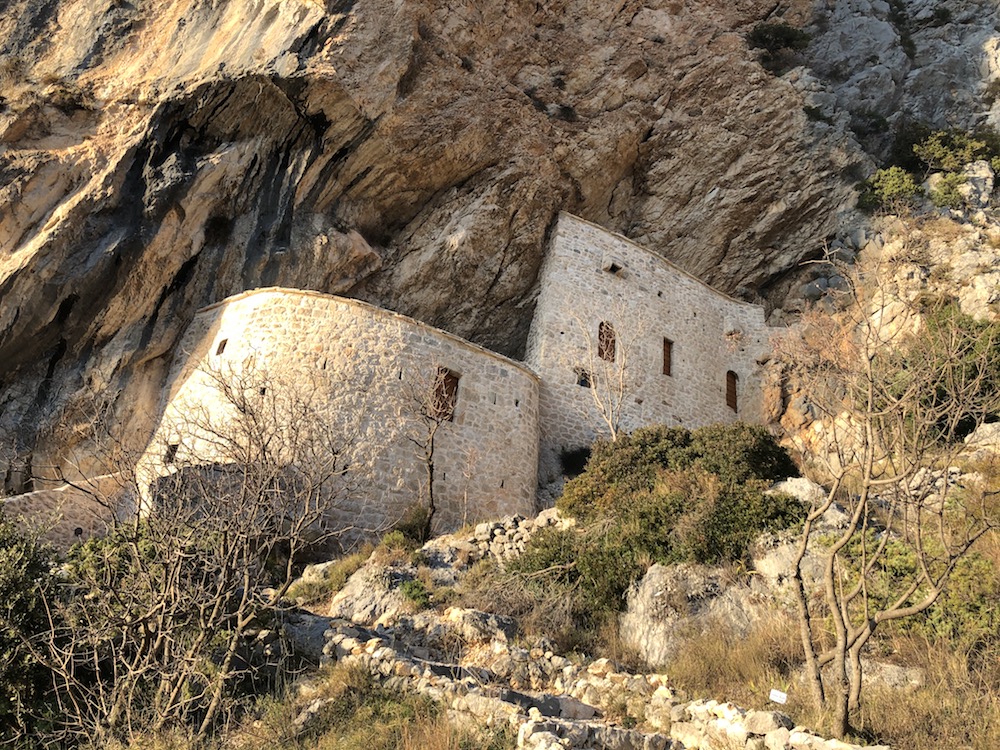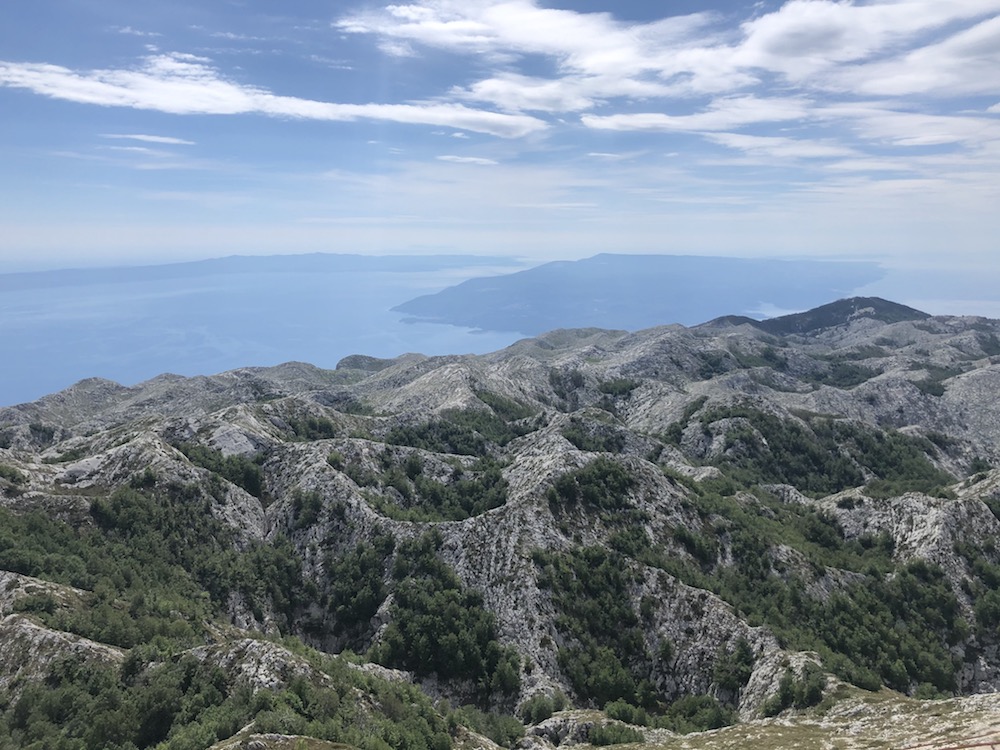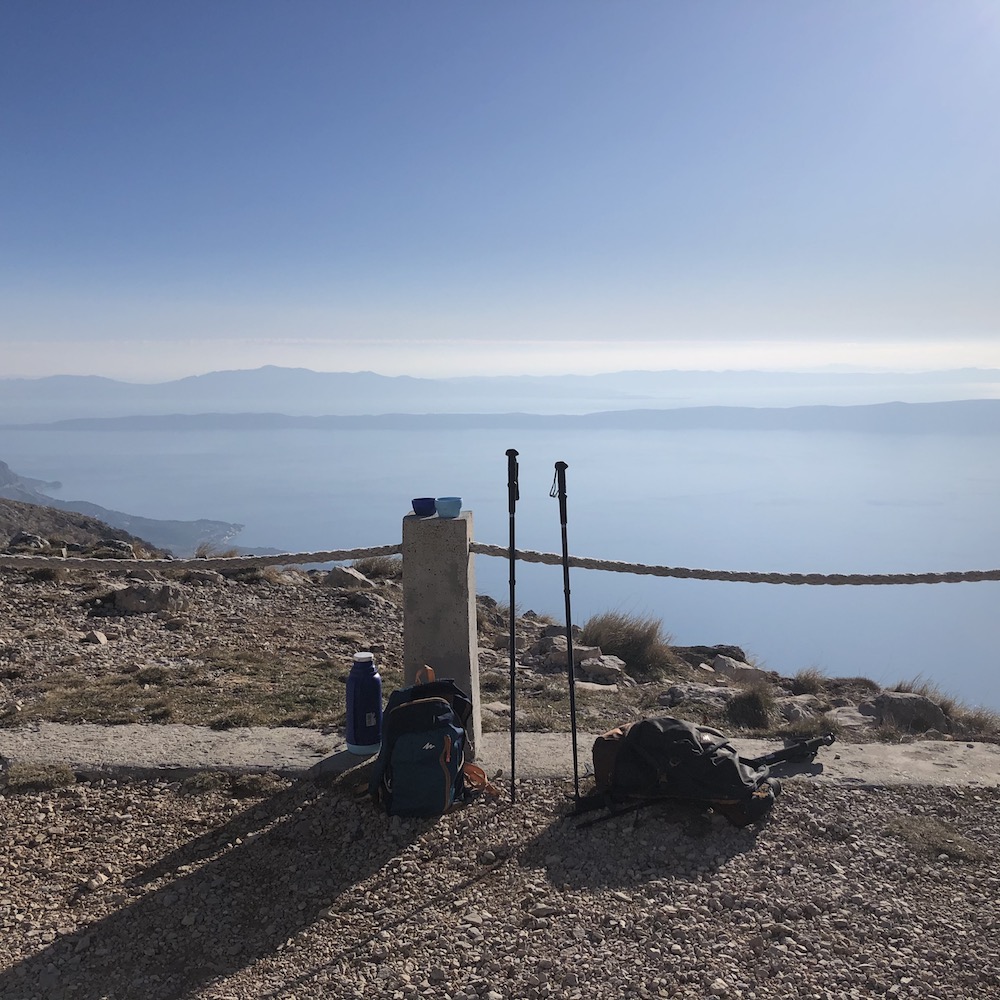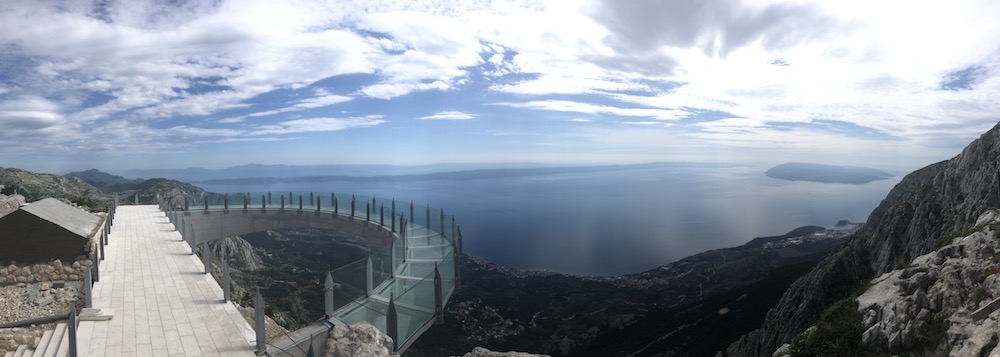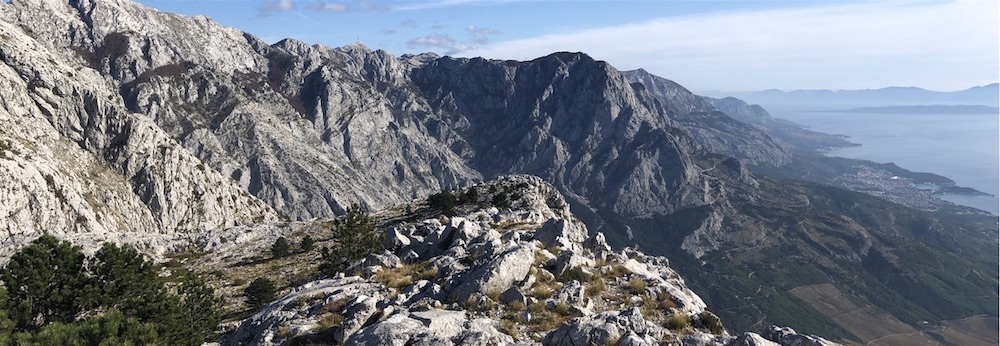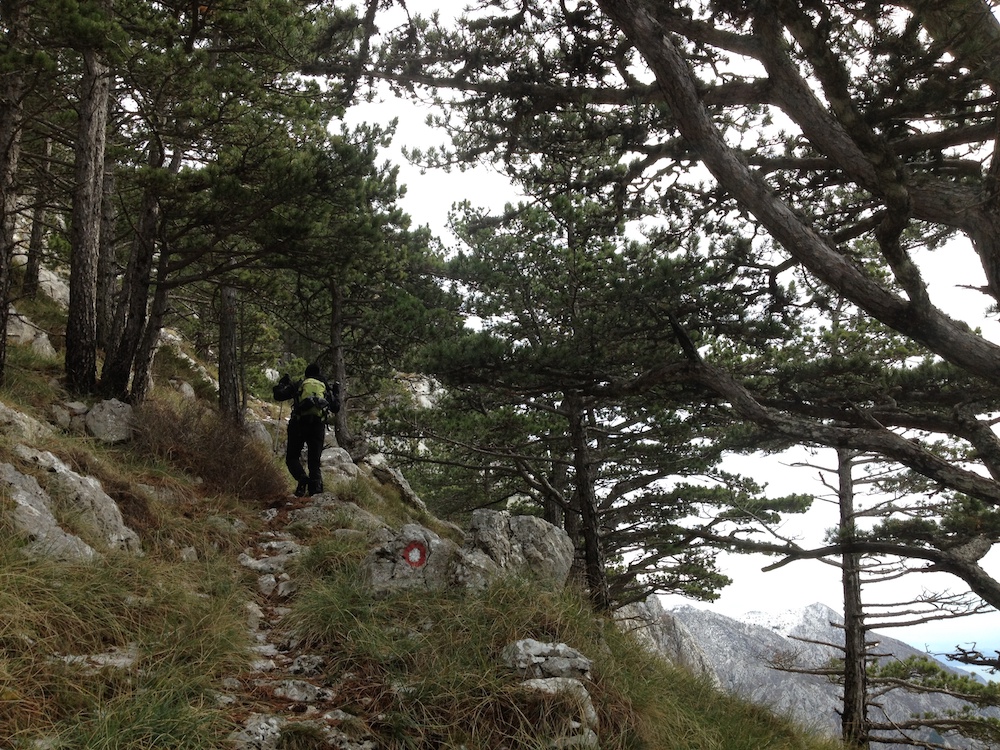Biokovo Mountain
Biokovo Mountain rises from the sea almost magically, high to the clouds inviting you to explore its peaks and hiking paths. The unique juxtaposition between the almost two-thousand-meter-high snowy mountain and the serene coastline is striking. But don’t get fooled, this mountain can be as mild as cruel.
Biokovo is the tallest mountain closest to the coast in the Mediterranean, and it is the largest and longest mountain range in Dalmatia, unique in so many different ways.
Because of its geo-morphology and biological diversity (with over 1,500 plant and animal species, some of which are endemic), the Biokovo Mountain was proclaimed a Nature Park in 1981. The highest peak in the range is Sveti Jure (St.George -1,762 meters above sea level).
Due to the mountain’s specific location and the fact it is rising from the sea level, dividing the narrow coastal part form the hinterland – it forms a barrier between two different climates: Mediterranean and Continental, creating a specific microclimate with frequent changes of weather.
The cold air coming from Biokovo creates the Bora wind, famous NE wind known for its strength. Fun Fact: official strongest Bora wind gust was from December 1998 measured on Maslenica Bridge – 248 km/h (69,0 m/s).
The oldest rocks on Biokovo Mountain originate from 220 m. years ago. The mountain has all the typical karst phenomena – sinkholes, caves, ice pits, and pits. The pit Mokre Noge (Wet Feet) at 839m is the deepest on Biokovo Mountain making it 4th deepest pit in Croatia.
Up to now, over 400 caves have been found, of which 177 have been investigated. Some of them are eternally filled with snow and ice, resisting even the hottest sunshine. Long ago, before refrigeration, ice from the high caves was brought to the coast using donkeys and horses.
Many traces point to the coexistence of men and mountain: archeological remains, churches, chapels, and shepherds houses. Man inhabited Biokovo in prehistoric times. For centuries, Biokovo Muntain was feeding its population, and the locals perceived it almost as a holy mountain in return. People found fertile karst valleys which they brought to life and used for survival.
They would come to the mountain to plant potatoes and cereal crops and hunt and extract ice, but most of all, to attend to livestock. Towards the beginning of the 20th century, over 600 shepherds, male and female, stayed on Biokovo. Taking care of livestock was done by women in those days, so there were twice as many female shepherds than male ones; in the meantime, men would work on the land in the valleys of Biokovo.
Today parts of the mountain are still cultivated, but not to the extent as it was in the past when produce from Biokovo fed the coastal settlements. There are more than 87 churches and chapels on Biokovo, and the church of St. George (Sv. Jure) on Biokovo is the highest from sea-level church in Croatia.
Vegetation on the entire surface of the mountain slope is scarce. Plants that have adapted to the steep rocks and cliffs, rugged and barren terrain dominate Biokovo Mountain. The peak area Biokovo has an emphasized strip marked with the dominance of the mountain pastures, with substantial participation of the rocky surface while forest remains here are just located in sinkholes.
The botanical garden above the village of Kotisina is partly located within the Park. It is not a classical botanical garden; instead, it is an enclosed part of nature, aiming to preserve the natural form of vegetation. On a relatively small surface, highly diverse habitats can be found here: rocks, talus cones, steep stone walls, arable plots, as well as the Proslap canyon with the cascade of the same name.
The cascade is dry most of the year, brought to life only during heavy rains. Approximately 300 wild plant taxa have been discovered, ranging from the typically Mediterranean to mountain species; in some areas, exotic plants were planted, as well as agricultural and medicinal plants.
Next to the cliff at the entrance to the botanical garden, stands a stony reminder of turbulent times: the walls of Kastel, a significant fortification from the 16th and 17th centuries.
Endemic species are what makes the flora of Biokovo so unique. The best-known endemic plant species are the Biokovo bellflower, Centaurea gloriosa and Moltkea petraea, the latter being endemic in a wider Dinaric area.
The fauna of Biokovo is distinctive and diverse, but also insufficiently researched. In numerous caves and pits of Biokovo, fascinating subterranean fauna abounds. So far, over 199 cave species have been recorded, including 60 species endemic to Biokovo.
With a little bit of visitor’s luck, one might also come across wild horses. They got used to visitors, and do not run away from people. Seeing a herd of wild horses is genuinely an archetype image of freedom.
There are no surface watercourses on Biokovo Mountain, only rare karst sources and groundwater instead. Specific water habitats including pools of water, solution pans and wells are filled with water most of the year thanks to an impermeable layer of clay and serve as watering places for domestic animals.
Such water habitats also constitute home for some protected amphibian species, with seven of them recorded in the Biokovo Nature Park territory. In the territory of the Nature Park, 21 reptile species have been recorded so far: one turtle species, ten lizard species, and ten snake species.
The most numerous group of species on Biokovo are vertebrates. Among almost one hundred bird species, some rare and endangered species also live on the mountain: strictly protected species short-toed snake-eagle, golden eagle and Eurasian kestrel.
There are 42 mammal species on Biokovo, with all bat species strictly protected. Out of ten carnivore species, jackal and bear occasionally appear, and the wolf is present permanently. The latter is included on the list of near-threatened species. The Biokovo population of chamois, on the other hand, is considered to be the most stable and the biggest chamois population in Croatia.
The most popular point of the visit is St.George peak (Sv.Jure), the second-highest peak in Croatia. The oldest hiking trail to St George (on the south side of the mountain) leads from the village Makar (229 m), over mountain lodge Vosac (1422 m), and to the mountain hut by the peak St George (1762 m).
Another popular place is a 23 kilometers long paved road (built-in 1978) that became popular with cyclists. It has recently been included as a climb in professional road bicycle races during the 2017 Tour of Croatia. So besides hikers, Biokovo is loved by cyclists looking for new challenges.
And yes, you can reach the peak by car, but be ready for a very narrow winding road, offering spectacular views and occasional stress if you are not used on super narrow roads and bypassing with other cars.
Vosac peak (1421 m) on the NW part of the mountain offers a beautiful view of the sea and the rocks of Biokovo, allowing visitors to experience a memorable bird’s eye on the settlements and beaches of the littoral zone of Makarska and the town itself.
Hikers who start their climb to Biokovo on foot from Makarska have two available route options, one across Makar, and one across Kotisina. Both routes are long and hard due to significant elevation differences (about 4h walk). If you are not an avid hiker, you can also reach Vosac peak from a parking space along the paved road through the park. It is about 30 minutes of hiking to reach the Vosac peak.
Another spectacular viewpoint is the brand new Skywalk, 1228 meters up Biokovo Mountain at Ravna Vlaska pass.
There are many other peaks attracting hikers: Troglav (1658 m), Scirovac (1619 m), Sveti Ilija (1642 m), Veliki Sibenik (1467 m), Sveti Jure (1762 m), Kimet (1556 m), Bukovac (1262 m).
SE part of the mountain is also called Rilic, with peeks: Sutvid (1155 m), Sokolic (788 m) and Sveti Ilija (773 m). These peaks were on the merchant routes in the past, connecting the coastal area with the hinterland.
The best base to explore Bikovo Mountain is from one of the settlements on Makarska riviera (Brela, Baska Voda, and Makarska), but it is also accessible from Split. The Nature Park Biokovo has no accommodation facilities open except for mountain houses where a bed is possible with previous announcements and consultation with mountaineering clubs.
For those that wish to explore Biokovo, it should be noted that all climbs from the coast are lengthy and very demanding, exposed to the sun for the most part, which is why it is recommended to start ascending early at dawn.
Due to wild terrain, ascents should be avoided when the weather conditions are unfavorable (fog, bora wind, snow), and preparation for this type of climb should be thorough. Plenty of water should be carried along, as it is scarce on Biokovo. Nevertheless, visit to Biokovo provides a memorable experience of the mountain and sea one should not miss.


